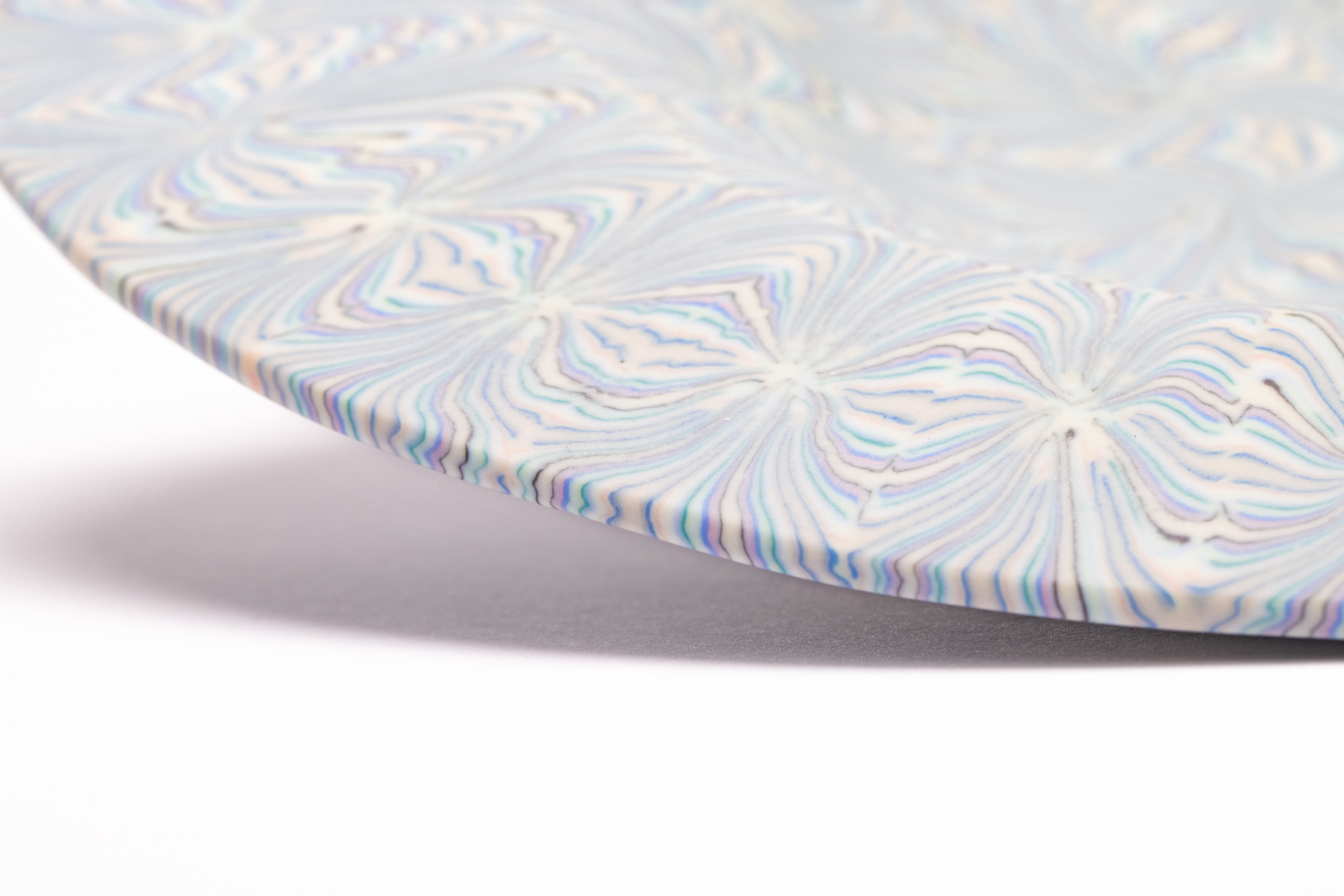現在お買い物カゴには何も入っていません。
だれ
小さい頃から工作、手芸が大好きで、目にとまったものは、何にでも挑戦していた。幼稚園に上がる少し前に、母がしていたかぎ針編みに惹かれ、教えてもらいながら初めてマフラーを編んだ。色は継ぎ足しで全くぎこちないが、とにかく形になった。小2の頃、フェルト細工の虜になって、日曜日は特に朝から、目が覚めたらそのまま針と糸で一日中チクチクと、お人形、動物、食べ物、家具などを作っていた。何時間でも平気で作業できた。モンチッチの服も、自分の服も編み物やミシンで作るようになった。紙工作、イラスト、千代紙人形、ビーズ、お菓子作りなど挙げて行けばきりがない。自分の手で触って、手を使って物を作るということに、ものすごくどきどきわくわくする。それは今でも同じ。母が、一度も「危ないから、だめ!」と言わなかったことにとても感謝している。
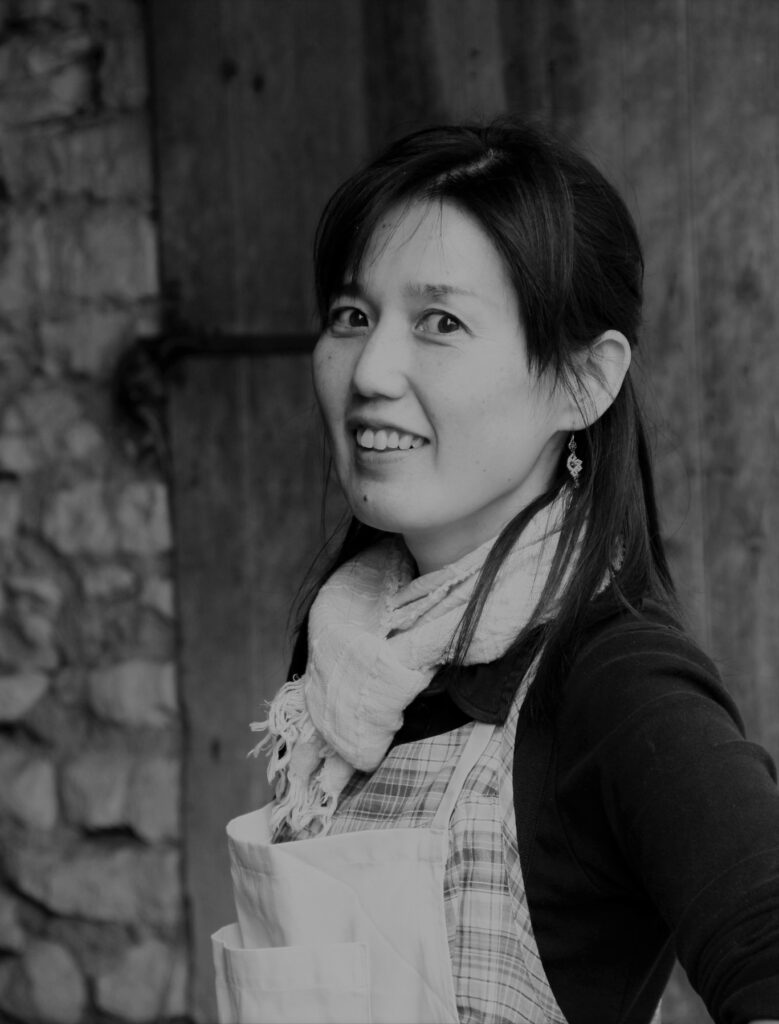
日本で生まれ育ち、学び、社会人となり、そして今、フランスで陶芸をしている。 1997年渡仏。陶芸にはずっと興味があった。でも、教室に通いだしたのは、2012年の夏。ダニー・スリオ女史との出会いだ。週一行けるか行けないかだったが、ろくろばかりしていた。夢中だった。寝ても覚めても、仕事以外は、陶芸のことばかり考えて、2014年からは、彼女のもとで研修生という形で勉強をさせてもらった。ろくろが大好きだったが(陶土での)、磁土へのあこがれも強かった。色々と見聞き、読み聞きするなかで色土を組み合わせ模様を作ったり、その断面を模様として使ったりしているものを試したくなり、すぐにはまってしまった。それには、練り込み、練り上げという名前がついていることを知った。そして磁土での練り込みを始めた。どこを切っても金太郎、の金太郎飴方式で模様を作る技法。ダニーの専門ではなかったが、彼女はアトリエや素材を自由に使わせてくれ、逆に私のしていることにとても関心を示してくれた。ネットで色々探していると、「室伏英治」という名前、そして氏が本を出していることを知り、取り寄せ、また没頭した。一人で繰り返し作業しては、ダニーの窯で焼いてもらっていた。2016年春、一時帰国の際、思い切って、室伏英治氏に連絡をし、特別指導を仰いだ。そこで、氏に背中を押され、フランスで窯を持つことになった。同年の暮に、もう一度工房に伺えるチャンスがあり、更に教えを請うた。
C’est pendant cette phase d’apprentissage qu’elle se sentit de plus en plus attirée par la porcelaine et notamment la technique appelée nériage un travail sur le mélange d’argiles colorées. Par la suite elle découvrit le travail d’Eiji MUROFUSHI, Mika SATO et leur atelier. Elle commença alors à faire des pièces de porcelaine en nerikomi.
C’est à cette période, par l’intermédiaire de Dany, qu’elle fait connaissance de Florence BEUDIN LESAINT. Et depuis, ces trois céramistes se voient régulièrement afin d’échanger leurs savoir-faire.
以来、私は主にフランスで活動しております。
2024 Janvier – Pour Dalloyau Paris. Conception suite aux éléments et réalisation des fèves gagnantes pour la galette signature Dalloyau x Paul & Jo
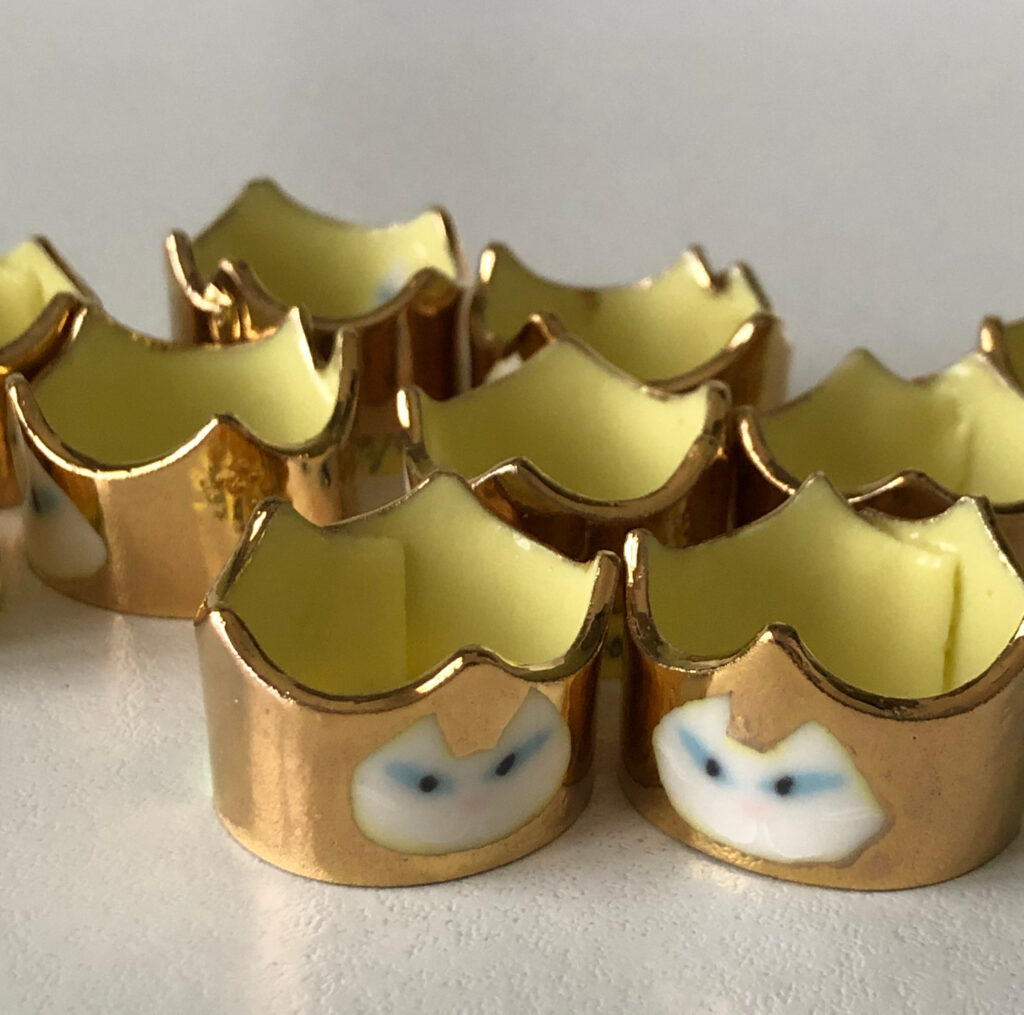
2022, 2023, 2024 Janvier – Pour le Fournil d’Elina. Conceptions et réalisations des fèves des galettes frangipanes

2022 – Concours des étoiles du commerce et l’artisanat, de la Caisse d’Épargne Aquitaine Poitou-Charentes – Lauréate de la Vienne
2020 – Concours Ateliers d’Art de France – sélectionnée pour la Région Nouvelle Aquitaine
2019 – Expression terre 2020, prix de céramique de petite forme – sélectionnée
2017 – Salon de la création métiers d’art 2017 de Nantes – 1er prix concours Banque Populaire Atlantique
2017 – Exposition concours de la Jeune Céramique Européenne de Saint Quentin la Poterie – sélectionnée
Nériage et nerikomi
En France, « nériage » est le terme le plus souvent employé. Ce mot vient du japonais, « neriage » 練り上げ (ou 練上) prononcé plutôt comme nez-lit-à-guet, traduit littéralement : « pétrir-finir ».
Il y a aussi le terme « nerikomi », qui parle également du travail de mélange de terres colorées comme le nériage. Nerikomi 練り込み(ou 練込)veut dire « pétrir-mettre ».
La distinction de ces mots n’est pas stricte, mais nous constatons souvent que les pièces tournées au tour sont appelées plutôt les nériages, tandis que les pièces modelées à la main portent le titre de nerikomi.
Yuko utilise le terme « nerikomi » comme Mr MUROFUSHI et Mme SATO.
Nerikomi
In a nerikomi piece, it is possible to see several colors, or just one but with different shades. It can represent abstract images like clouds or waves, geometric patterns, or even a perfect design like flowers. However, all this is not "painted" because it is not an enamel or paint job. These patterns are the result of reassembling clays previously colored with different pigments. The manipulation of porcelain further complicates these reassemblies because of its much more elastic texture than stoneware. During the various stages of design, drying and two firings, even the most experienced nerikomi ceramists are confronted with problems of cracking, breakage and deformation.
Images of porcelain
To each person his expression of porcelain but it evokes us: whiteness, nobility, finesse, purity, sobriety... Bring porcelain into your life, on your table, in your room, wherever you feel good. And don't get me wrong, porcelain isn't as fragile as you might think. Even if a cup or a statue seems fragile and brittle to you, the solidity is higher than that of stoneware. After the last firing, the porcelain becomes almost a stone.
translucent porcelain
Yuko also plays with translucency in her nerikomi pieces. Natural porcelain tends to let light through. However, the pigment-colored parts cut this effect. Exposed to light, his pieces offer us another atmosphere, a kind of magic: the patterns are intensified and other hidden ones appear.
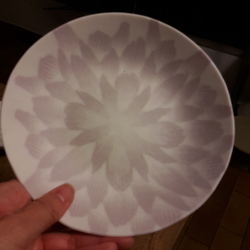

Soft touch, the final texture
Yuko chooses not to enamel its porcelain pieces, in order to preserve the matte and pure side of the porcelain. She sands all her pieces after the last firing, with several papers. This step gives them a very soft "skin", very pleasant to the touch. A well-colored sauce or a coffee will not stain them.
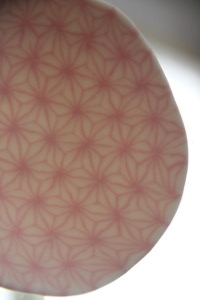
“Hemp leaf” is the translation of Asanoha. The triangles that form hexagons represent one of the traditional Japanese motifs. The diamond in two triangles is reminiscent of the pointed leaves of hemp. The Asanoha pattern has long been a symbol of good health and also considered a talisman. Indeed, it is a plant that grows quickly, straight and very tall. Thus, in the past, parents dressed their newborn at the age of 2 or 3 days, with a small kimono in Asanoha pattern. In addition, there were many kimono with this pattern, especially as under-kimono, for the older ones, in order to benefit as closely as possible from its effect. Beliefs often associate the triangle with a protective power (talisman, exorcism). Multiplied, they increase their power. Nowadays, it is omnipresent thanks to its beauty but its meaning is forgotten among the Japanese and absent among Westerners.
